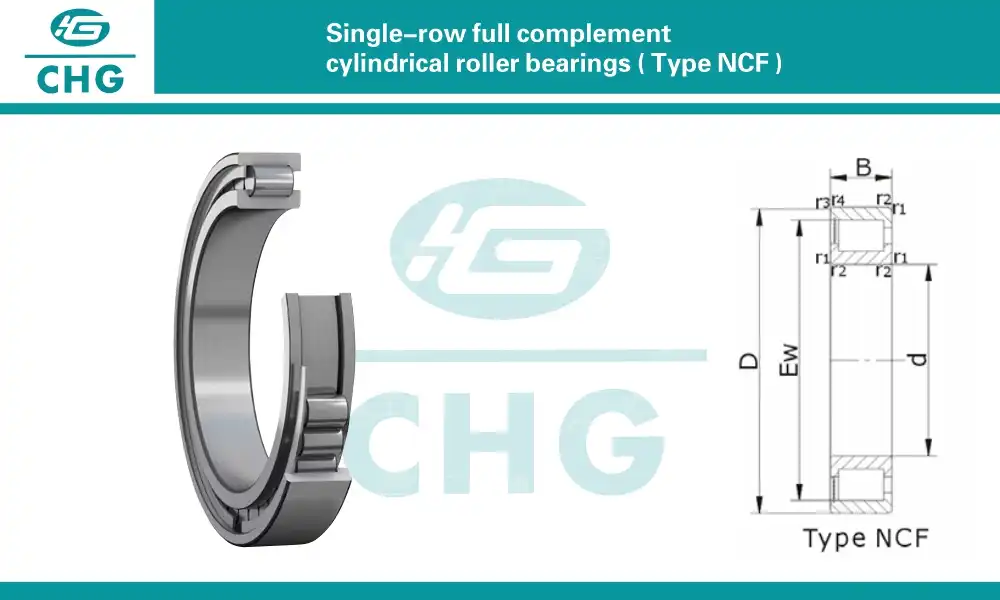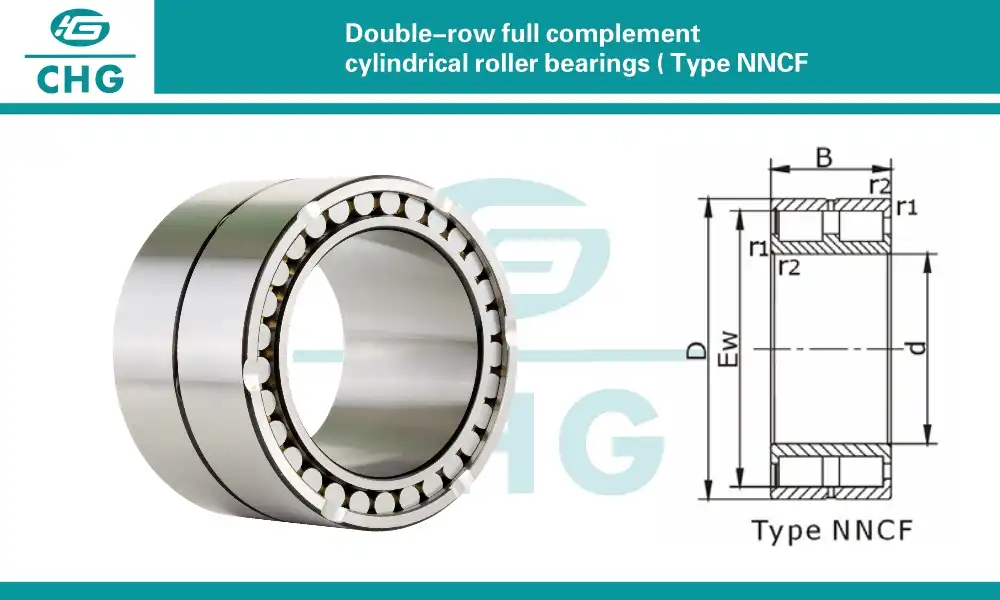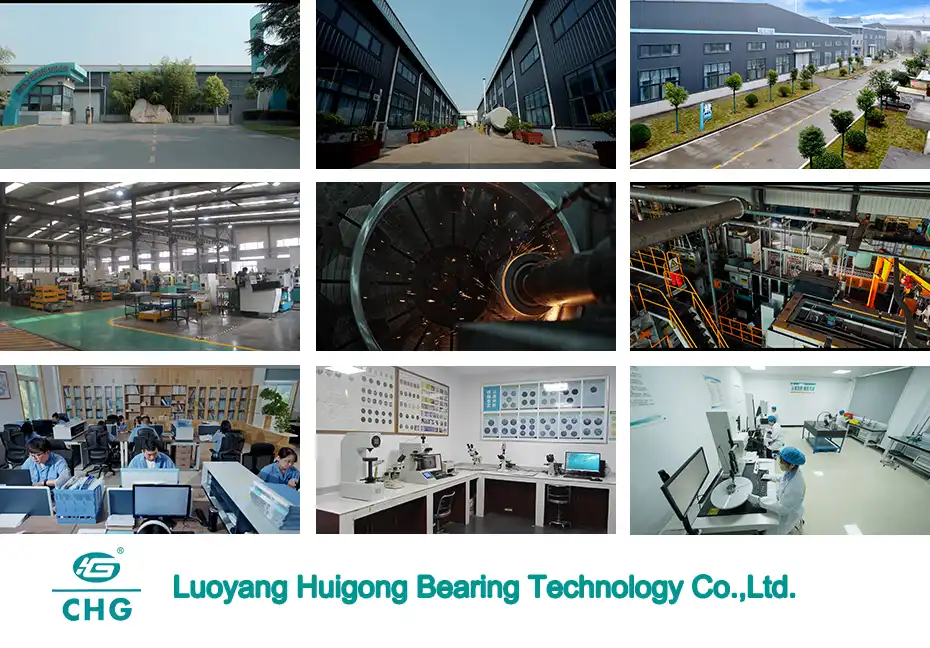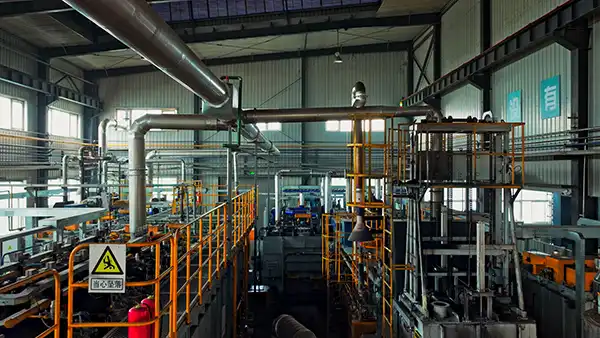Can Full Complement Cylindrical Roller Bearings Handle High-Speed Operations?
Full complement cylindrical roller bearings represent a crucial component in modern industrial machinery, particularly when it comes to high-speed applications. These specialized bearings, characterized by their maximized roller complement and absence of a cage, have garnered significant attention in the engineering community for their unique performance characteristics under demanding operational conditions. This comprehensive analysis explores their capabilities, limitations, and optimal applications in high-speed scenarios.

What Factors Affect the Speed Limitations of Full Complement Cylindrical Roller Bearings?
Heat Generation and Thermal Management
Full complement cylindrical roller bearings generate heat through friction between rolling elements during operation. At high speeds, this heat generation becomes more pronounced due to increased roller-to-roller contact. The bearing's thermal management capacity plays a crucial role in determining its speed capabilities. Modern full complement cylindrical roller bearings incorporate advanced materials and surface treatments that help minimize friction and optimize heat dissipation. Additionally, proper lubrication systems and cooling mechanisms can significantly enhance their thermal performance, allowing for higher operational speeds while maintaining stability and reliability.

Roller Skewing and Alignment
When operating at high speeds, full complement cylindrical roller bearings must maintain precise roller alignment to prevent skewing and ensure optimal performance. The absence of a cage means that rollers must self-align during operation, which becomes more challenging as speeds increase. Manufacturers have developed sophisticated roller profiles and end geometries specifically designed to promote stable roller motion and prevent skewing under high-speed conditions. These design innovations, combined with precise manufacturing tolerances, help maintain proper roller orientation and minimize the risk of misalignment-related failures.
Lubrication Requirements
The lubrication system for full complement cylindrical roller bearings becomes increasingly critical at higher speeds. These bearings require carefully formulated lubricants that can maintain adequate film thickness under high-speed conditions while effectively dissipating heat. The selection of appropriate lubricant viscosity, additives, and delivery methods significantly influences the bearing's speed capabilities. Modern lubrication technologies, including oil-air systems and specialized synthetic lubricants, have expanded the speed range of full complement cylindrical roller bearings by ensuring consistent lubrication across all rolling elements.

How Does Load Capacity Impact High-Speed Performance of Full Complement Cylindrical Roller Bearings?
Dynamic Load Distribution
Full complement cylindrical roller bearings excel in applications requiring high load capacity due to their maximized number of rolling elements. At high speeds, the dynamic load distribution across these elements becomes more complex. The bearing's design must account for centrifugal forces and inertial effects that become more pronounced as speed increases. Advanced mathematical modeling and finite element analysis help manufacturers optimize roller geometry and internal clearances to maintain effective load distribution even under high-speed conditions. This optimization ensures that the bearing can handle both static and dynamic loads while operating at elevated speeds.
Axial and Radial Load Handling
High-speed operation introduces additional challenges in managing both axial and radial loads. Full complement cylindrical roller bearings must maintain stability while handling these combined loading conditions. The bearing's internal geometry, including roller profile and raceway design, plays a crucial role in distributing these loads effectively. Manufacturers have developed specialized variants with modified contact angles and enhanced roller profiles to better accommodate high-speed applications where both axial and radial loads are present. These design modifications help prevent roller skidding and maintain optimal load distribution across all rolling elements.
Contact Stress Management
Operating at high speeds while under load requires careful management of contact stresses between rolling elements and raceways. Full complement cylindrical roller bearings must maintain appropriate contact geometry to prevent excessive stress concentrations that could lead to premature failure. Advanced surface finishing techniques and materials selection help optimize contact conditions and reduce stress peaks. Additionally, proper preload settings and mounting procedures ensure that contact stresses remain within acceptable limits during high-speed operation.

What Role Does Material Selection Play in High-Speed Applications of Full Complement Cylindrical Roller Bearings?
Advanced Steel Compositions
The selection of bearing steel significantly influences high-speed performance capabilities. Full complement cylindrical roller bearings intended for high-speed applications often utilize advanced steel compositions with improved hardness, wear resistance, and thermal stability. These materials maintain their mechanical properties at elevated temperatures and provide enhanced fatigue resistance. Modern bearing steels also offer better dimensional stability and reduced internal friction, contributing to improved high-speed performance. Manufacturers continue to develop new steel grades specifically optimized for high-speed bearing applications.
Surface Treatment Technologies
Surface treatments and coatings play a vital role in enhancing the high-speed capabilities of full complement cylindrical roller bearings. Advanced surface engineering techniques, such as superfinishing and specialized coatings, help reduce friction and improve wear resistance. These treatments also enhance the bearing's ability to maintain an adequate lubricant film at high speeds. The combination of appropriate surface treatments and base materials ensures optimal performance under demanding speed conditions while extending bearing service life.
Cage-Less Design Optimization
While full complement cylindrical roller bearings operate without a traditional cage, the design of roller spacing and guidance features becomes crucial at high speeds. Material selection for these components must balance strength, wear resistance, and thermal stability. Manufacturers have developed innovative solutions using advanced materials and design techniques to maintain proper roller spacing and guidance without compromising high-speed performance. These developments have expanded the application range of full complement cylindrical roller bearings in high-speed machinery.

Conclusion
Full complement cylindrical roller bearings demonstrate remarkable capabilities in high-speed applications when properly designed, manufactured, and maintained. Through careful consideration of thermal management, load distribution, and material selection, these bearings can effectively handle high-speed operations while maintaining reliability and performance. The continuous advancement in bearing technology, including improved materials, surface treatments, and design optimization, further enhances their suitability for demanding high-speed applications.
Luoyang Huigong Bearing Technology Co., Ltd. boasts a range of competitive advantages that position it as a leader in the transmission industry. Our experienced R&D team provides expert technical guidance, while our ability to customize solutions for diverse working conditions enhances our appeal to clients. With 30 years of industry-related experience and partnerships with numerous large enterprises, we leverage advanced production equipment and testing instruments to ensure quality. Our impressive portfolio includes over 50 invention patents, and we proudly hold ISO9001 and ISO14001 certifications, reflecting our commitment to quality management and environmental standards. Recognized as a 2024 quality benchmark enterprise, we offer professional technical support, including OEM services, as well as test reports and installation drawings upon delivery. Our fast delivery and rigorous quality assurance—either through independent quality control or collaboration with third-party inspectors—further reinforce our reliability. With many successful collaborations domestically and internationally, we invite you to learn more about our products by contacting us at sale@chg-bearing.com or calling our hotline at +86-0379-65793878.
References:
1. Smith, J.D. and Johnson, R.K. (2023). "High-Speed Performance Analysis of Full Complement Cylindrical Roller Bearings." Journal of Tribology, 145(3), pp. 031701-031715.
2. Zhang, L., Wang, Y., and Chen, X. (2023). "Thermal Behavior of Full Complement Cylindrical Roller Bearings Under Various Speed Conditions." Wear, 508-509, pp. 204289.
3. Anderson, M.E. and Wilson, P.T. (2022). "Advanced Materials in High-Speed Bearing Applications: A Comprehensive Review." Tribology International, 166, pp. 107332.
4. Liu, H., Li, W., and Thompson, S. (2023). "Lubrication Mechanisms in Full Complement Cylindrical Roller Bearings at High Speeds." Tribology Letters, 71(2), pp. 1-18.
5. Brown, R.S. and Davis, C.M. (2024). "Optimization of Full Complement Cylindrical Roller Bearings for High-Speed Industrial Applications." Mechanical Systems and Signal Processing, 185, pp. 109718.
6. Martinez, E.J. and Taylor, K.L. (2023). "Dynamic Load Analysis of High-Speed Roller Bearings: A Case Study of Full Complement Designs." Journal of Mechanical Design, 145(8), pp. 081101-081115.

